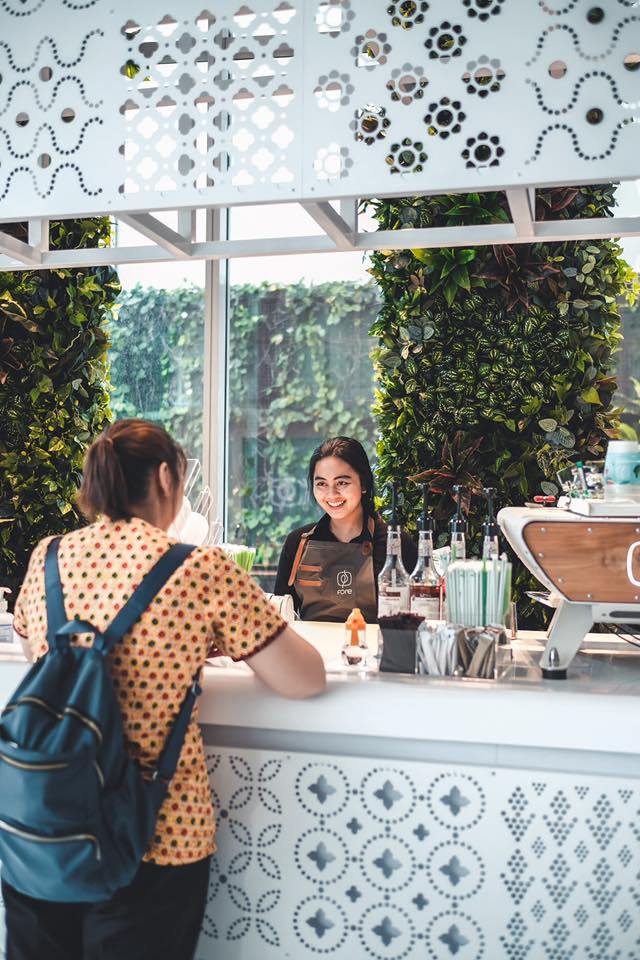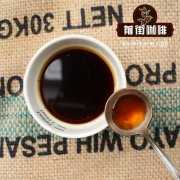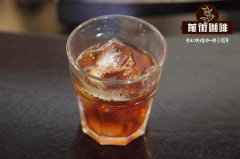Coffee prices in Indonesia are polarized, venture capital and start-ups aim at the mid-market

Professional coffee knowledge exchange More coffee bean information Please pay attention to coffee workshop (Weixin Official Accounts cafe_style)
Indonesia coffee price polarization, venture capital and new venture targeting the mid-market
Indonesia is the fourth largest coffee producer in the world and has enjoyed a worldwide reputation for centuries. In recent years, Indonesia's local coffee demand has also been rising, not only Starbucks such relatively high-priced brands everywhere, but also huge business opportunities in the mid-market.
According to Nikkei Asia Review, coffee consumption in Indonesia rose 26% from 2014 to 2018, but the local market has a gap between low-end instant coffee and high-priced coffee shops, lacking affordable and high-quality coffee. Mid-range brands such as Kopi Kenangan and Fore have sprung up to provide coffee for the growing middle class. Kopi Kenangan, founded in 2017, has 94 stores and plans to expand to 150 this year, while Fore currently has 72 stores and plans to expand to 135 by the end of the year.
Edward Tirtanata, founder of Kopi Kenangan, said: "Instant coffee costs about 1,000 rupiah per cup, better quality chain coffee costs about 40,000 rupiah, there is no compromise, so this is our positioning: affordable coffee for the masses." Kopi Kenangan's coffee is priced at 18,000 rupiah per cup and Fore at 35,000 rupiah per cup). The latter, though more expensive, offer many discounts and customers rarely have to pay full price.
Because of the huge potential of the mid-end coffee market, these two brands have won the favor of many top venture capitalists. Kopi Kenangan has raised $28 million to date, including $20 million from Sequoia Capital. Fore was nurtured by East Ventures in Asia Pacific and raised US$9.5 million in Series A funding, with investment from SMDV, a venture capital company owned by Indonesia's Sinar Mas Group.
Melisa Irene, principal of East Ventures, believes that now that platforms such as Grab and Go-Jek have equipped Indonesian cities with electronic payment channels and delivery services, it is time to consider what consumption options are available on this basis. Coffee has a large profit margin, so it is a good choice. "Ten purchases per year for e-commerce is good enough, but if the coffee business is run properly, it can attract customers to spend at least five times a week." She also pointed out that Ruixing Coffee's initial public offering (IPO) started successfully and has remained above US $17 (about NT $532) per share since its listing in May, showing that catering companies have a way out.
In addition, venture capital is also optimistic about these two coffee new light asset business model. They are modeled after the 'grab and go' model of Luckin Coffee in China, where most outlets are small stalls with few or no seats. Customers can order through the App, with discounts and no queues, and can choose to deliver to their homes by Go-Jek or Grab, or pay directly with the e-wallets of both platforms. In addition, Kopi Kenangan and Fore use coffee beans produced and roasted locally in Indonesia, further reducing costs.
♦Fore Coffee
Fore has two other tricks up his sleeve when it comes to branding. One is to collect information on the consumption platform to understand what meals customers like and where to open new stores. "We want to know where our customers are, and we want to be close to them, not just pick a location." Elisa Suteja, one of the founders, said.
And then there's the use of ground Arabica coffee beans. Coffee beans are divided into arabica (arabica) and robusta (robusta) two kinds, arabica more rich flavor, but robusta resistance to disease is stronger. Indonesia began growing coffee in the early 18th century and by the 19th century had become Europe's leading supplier of Arabica beans. However, around 1880, a coffee leaf rust destroyed most of Indonesia's coffee trees, and when coffee trees were replanted in West Java, Robusta replaced the original Arabica. By 2018, Arabica accounted for only 10% of Indonesia's coffee bean production.
Fore believes that by using Indonesian Arabica beans exclusively and boosting market demand for it, local coffee farmers can improve their livelihoods. Fore also hopes the story will resonate with middle-class Indonesians and entice them to keep coming back, with or without discounts on coffee.
Melisa Irene said,"If Fore can build local demand for Arabica beans, then the brand represents not just a cup of coffee, but the story behind it." As a consumer, you can help small farmers and small economies."
END
Important Notice :
前街咖啡 FrontStreet Coffee has moved to new addredd:
FrontStreet Coffee Address: 315,Donghua East Road,GuangZhou
Tel:020 38364473
- Prev

Panamanian Coffee Farm Duran Farm does China import coffee beans from Panama?
Professional coffee knowledge exchange more coffee bean information please follow the coffee workshop (Wechat official account cafe_style) as early as 2004, Panamanian coffee has been a marginal country of boutique coffee, has not been taken seriously by the international coffee community, however, in 2004 "geisha" boutique coffee war became famous, repeatedly won the Panamanian national treasure bean cup test, dominated all the way to 2007
- Next

What are the characteristics of coffee varieties grown in Burger Manor, Mexico?
Professional coffee knowledge exchange More coffee bean information Please pay attention to coffee workshop (Weixin Official Accounts cafe_style) Coffee originally came to Mexico around 1785. According to documents, coffee plantations were established in the Veracruz region in 1790. However, because Mexico is rich in mineral deposits, the coffee industry has had relatively little similar momentum for years. Mexico for the first time
Related
- Does Rose Summer choose Blue, Green or Red? Detailed explanation of Rose Summer Coffee plots and Classification in Panamanian Jade Manor
- What is the difference between the origin, producing area, processing plant, cooperative and manor of coffee beans?
- How fine does the espresso powder fit? how to grind the espresso?
- Sca coffee roasting degree color card coffee roasting degree 8 roasting color values what do you mean?
- The practice of lattes: how to make lattes at home
- Introduction to Indonesian Fine Coffee beans-- Java Coffee producing area of Indonesian Arabica Coffee
- How much will the flavor of light and medium roasted rose summer be expressed? What baking level is rose summer suitable for?
- Introduction to the characteristics of washing, sun-drying or wet-planing coffee commonly used in Mantenin, Indonesia
- Price characteristics of Arabica Coffee Bean Starbucks introduction to Manning Coffee Bean Taste producing area Variety Manor
- What is the authentic Yega flavor? What are the flavor characteristics of the really excellent Yejasuffi coffee beans?

